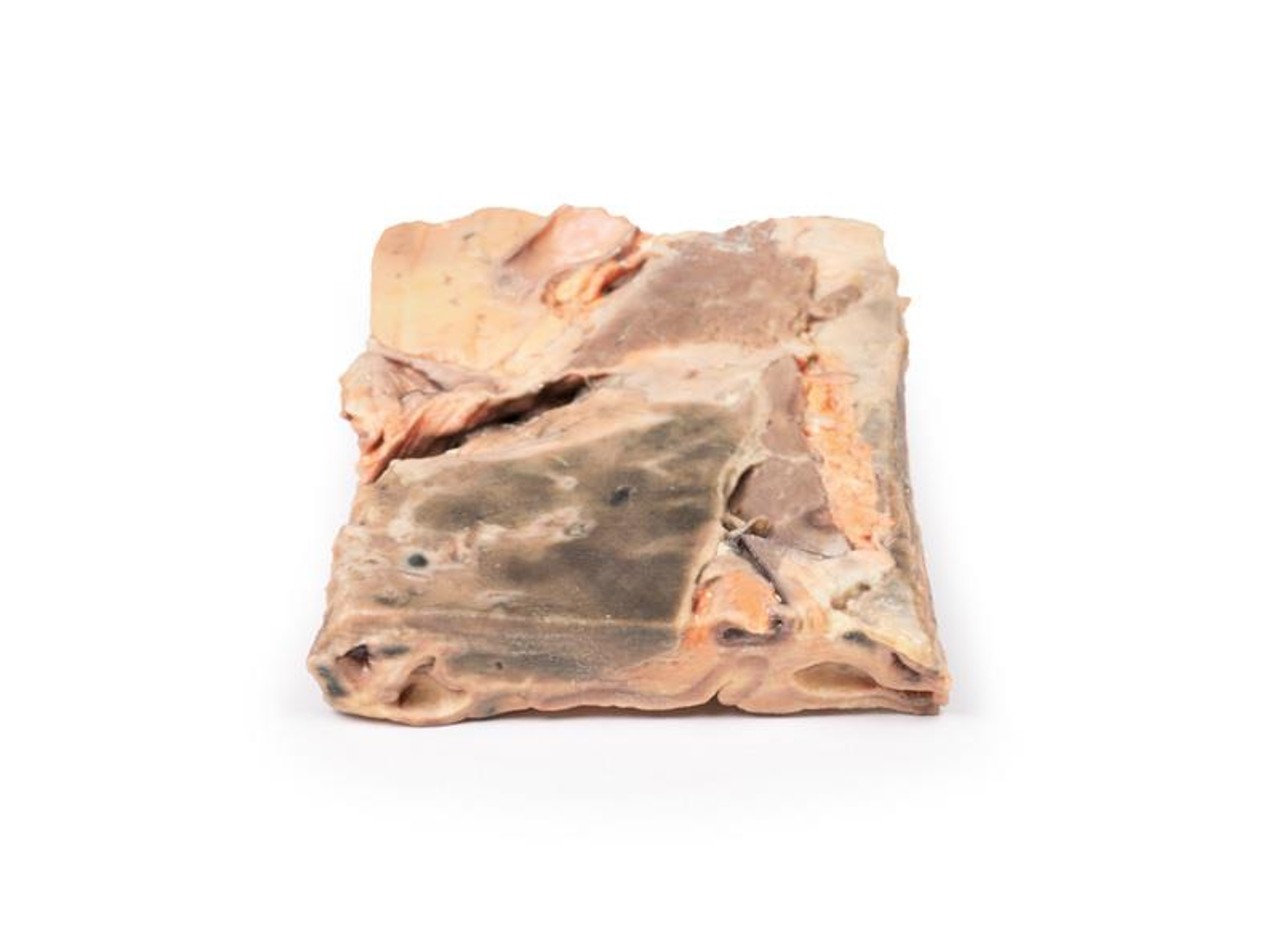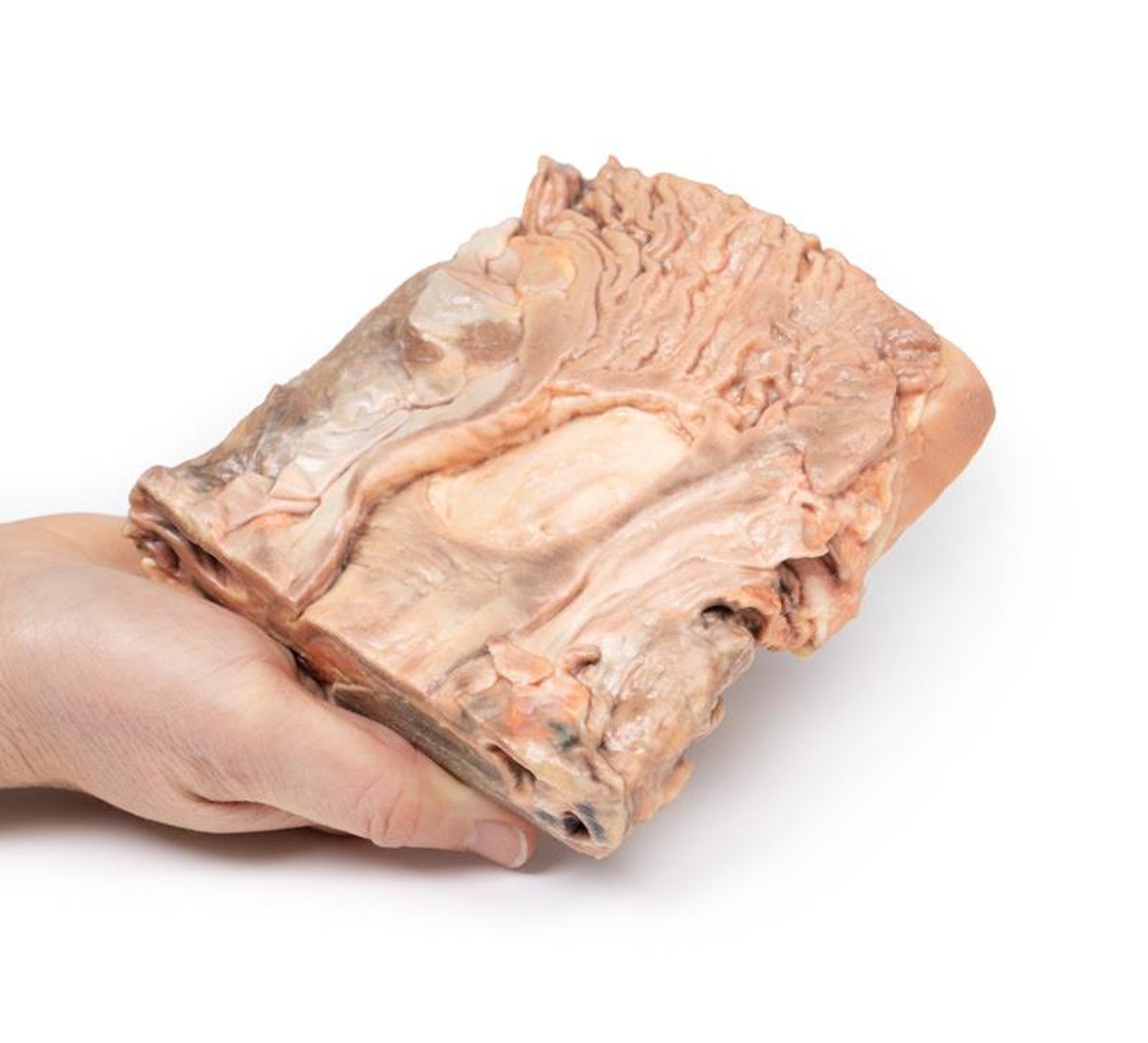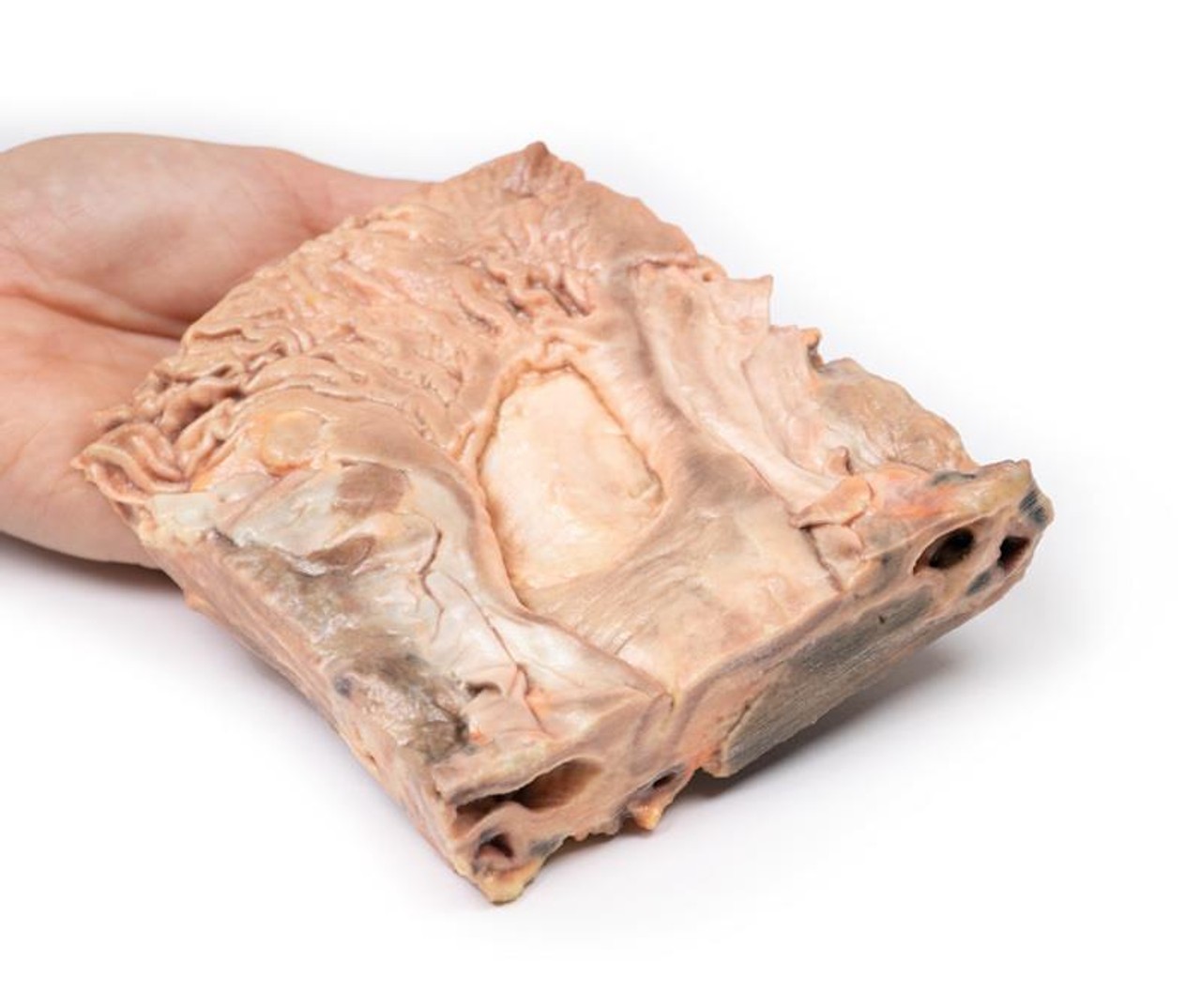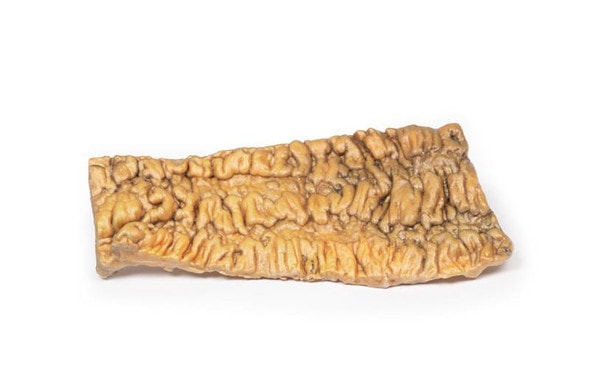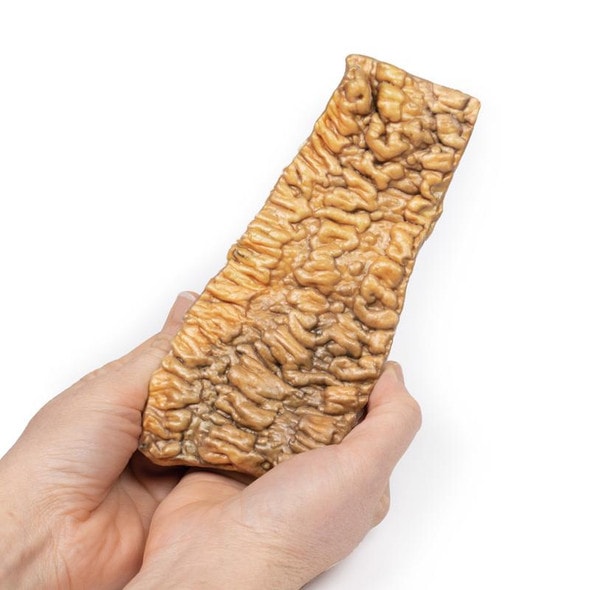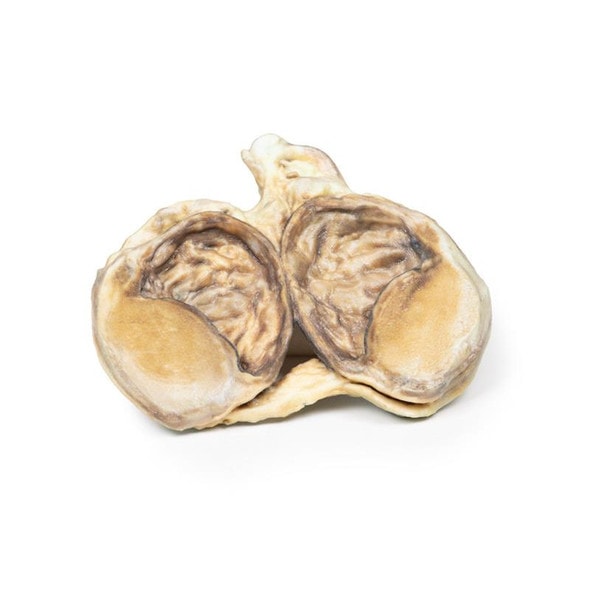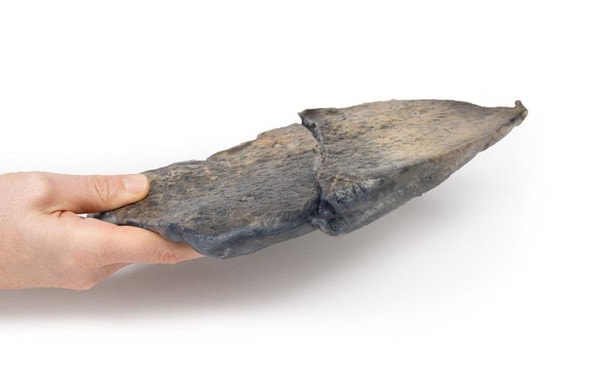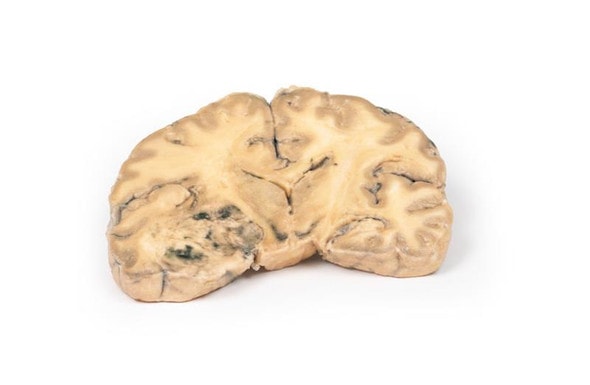Description
Developed from real patient case study specimens, the 3D printed anatomy model pathology series introduces an unmatched level of realism in human anatomy models. Each 3D printed anatomy model is a high-fidelity replica of a human cadaveric specimen, focusing on the key morbidity presentations that led to the deceasement of the patient. With advances in 3D printing materials and techniques, these stories can come to life in an ethical, consistently reproduceable, and easy to handle format. Ideal for the most advanced anatomical and pathological study, and backed by authentic case study details, students, instructors, and experts alike will discover a new level of anatomical study with the 3D printed anatomy model pathology series.
Clinical History
This elderly patient had a long history of "indigestion". He collapsed and died after a massive stoke.
Pathology
The specimen is a 2cm coronal slice of tissue, which incorporates a portion of stomach diaphragm, liver and pancreas. The specimen has been opened to display a large ulcer at the upper end of the lesser curvature near the gastro-oesophageal junction. Macroscopically, the loss of substance at the site of the ulcer is oval, has 5-6cm in diameter and slightly elevated borders. The base is clean and smooth with no evidence of hemorrhage. The gastric wall surrounding the ulcer is indurated, because of the fibrosis that involves the base of the ulcer and spreads beneath the surrounding mucosa. Being retractile, the fibrosis manages to "pull" the gastric mucosa towards the base of the ulcer, so that gastric mucosal folds converge radially around the loss of substance (this feature is not seen in ulcerated malignant gastric tumors). This is evident on the inferior aspect of the ulcer and less so superiorly.
Further Information
Patients with a gastric ulcer may experience pain worsening with eating, often described as a burning or dull ache. Other symptoms include belching, vomiting, weight loss, or poor appetite. Complications may include bleeding, perforation, and blockage of the stomach. Common causes include the bacteria Helicobacter pylori and non-steroidal anti-inflammatory drugs (NSAIDs).
H. pylori was first identified as causing peptic ulcers by Barry Marshall and Robin Warren of the University of Western Australia in the late 20th century, a discovery for which they were awarded the Nobel Prize in 2005. Other, less common causes include tobacco smoking, stress due to serious illness, Beh's disease, Zollinger-Ellison syndrome, Crohn's disease, and liver cirrhosis[1]. Older people are more sensitive to the ulcer-causing effects of NSAIDs[1].
The diagnosis is typically suspected due to the presenting symptoms with confirmation by either endoscopy or barium swallow[1]. H. pylori can be diagnosed by testing the blood for antibodies, a urea breath test, testing the stool for signs of the bacteria, or a biopsy of the stomach[1]. Other conditions that produce similar symptoms, include stomach cancer, coronary heart disease, and inflammation of the stomach lining (gastritis) or gallbladder inflammation (cystitis) [1].
Treatment includes stopping smoking, stopping use of NSAIDs, reducing or preferably stopping alcohol consumption, and taking medications to decrease stomach acid[1]. Ulcers due to H. pylori are treated with a combination of medications, such as amoxicillin, clarithromycin, and a proton pump inhibitor (PPI). The medication used to decrease acid is usually either a PPI or an H2 blocker (histamine H2-receptor antagonists). Bleeding ulcers may be treated by endoscopy, with open surgery typically only used in cases in which it is not successful. Peptic ulcers are present in around 4% of the population[1].
Reference:
1. Najm WI (2011). "Peptic ulcer disease". Primary Care. 38 (3): 383–94.
Advantages of 3D Printed Anatomical Models
- 3D printed anatomical models are the most anatomically accurate examples of human anatomy because they are based on real human specimens.
- Avoid the ethical complications and complex handling, storage, and documentation requirements with 3D printed models when compared to human cadaveric specimens.
- 3D printed anatomy models are far less expensive than real human cadaveric specimens.
- Reproducibility and consistency allow for standardization of education and faster availability of models when you need them.
- Customization options are available for specific applications or educational needs. Enlargement, highlighting of specific anatomical structures, cutaway views, and more are just some of the customizations available.
Disadvantages of Human Cadavers
- Access to cadavers can be problematic and ethical complications are hard to avoid. Many countries cannot access cadavers for cultural and religious reasons.
- Human cadavers are costly to procure and require expensive storage facilities and dedicated staff to maintain them. Maintenance of the facility alone is costly.
- The cost to develop a cadaver lab or plastination technique is extremely high. Those funds could purchase hundreds of easy to handle, realistic 3D printed anatomical replicas.
- Wet specimens cannot be used in uncertified labs. Certification is expensive and time-consuming.
- Exposure to preservation fluids and chemicals is known to cause long-term health problems for lab workers and students. 3D printed anatomical replicas are safe to handle without any special equipment.
- Lack of reuse and reproducibility. If a dissection mistake is made, a new specimen has to be used and students have to start all over again.
Disadvantages of Plastinated Specimens
- Like real human cadaveric specimens, plastinated models are extremely expensive.
- Plastinated specimens still require real human samples and pose the same ethical issues as real human cadavers.
- The plastination process is extensive and takes months or longer to complete. 3D printed human anatomical models are available in a fraction of the time.
- Plastinated models, like human cadavers, are one of a kind and can only showcase one presentation of human anatomy.
Advanced 3D Printing Techniques for Superior Results
- Vibrant color offering with 10 million colors
- UV-curable inkjet printing
- High quality 3D printing that can create products that are delicate, extremely precise, and incredibly realistic
- To improve durability of fragile, thin, and delicate arteries, veins or vessels, a clear support material is printed in key areas. This makes the models robust so they can be handled by students easily.



